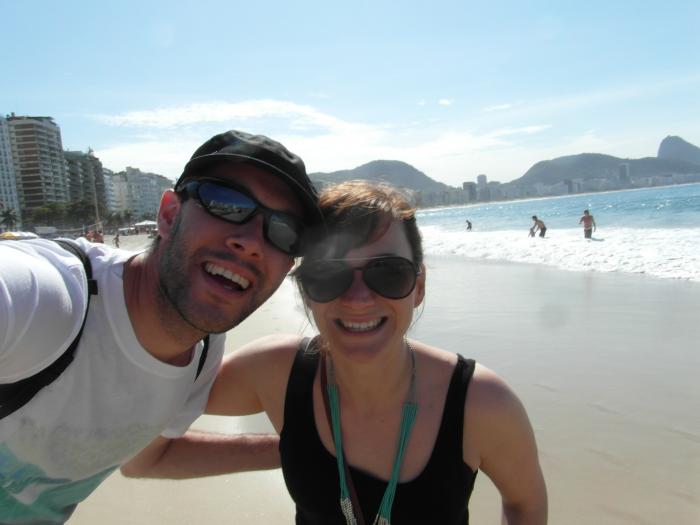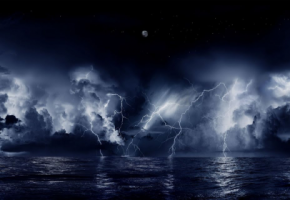RIO DE JANEIRO
Like most visitors, we started in Rio. A city which I'd expected to be as frenetic as other heaving metropolises, but which in reality moves to an altogether different beat. The quirky and sometimes gravity-defying sprawl, which can really only be absorbed in all its magnificence after two cable car rides to the top of Sugar Loaf Mountain, is surprisingly laid back when you descend into the thick of it.
From up high, Rio's insane city planning cannot be ignored. Colourful makeshift houses cling to the mountainsides while wealthy Cariocas and endless hotels claim the premium spots on the flatter stretches of Ipanema and Copacabana beaches. Construction teams busily knock away at those pesky mountains, trying to dig tunnels and forge easier connections between neighbourhoods in time for the 2016 Olympics. No type of terrain appears to be off limits – the only real boundary to Rio is where the sea takes over. Its geography is inspiring and ludicrous at the same time, but undeniably beautiful whichever way you look at it.
First port of call was to sink my feet into the sand on Copacabana Beach. This unique urban playground is even more mesmerising in real life: as four kilometres of perfect sand and sea stretch out before you and those iconic craggy mountains rear up through the mist, it's impossible to imagine this could be a backdrop to everyday life. And yet the beach hums with the sound of locals going about their daily business and, despite being one of Brazil's biggest tourist hotspots, you can still buy a caipirinha for £2.
We spent a leisurely morning walking from the end of Copacabana, across Arpoador and down Ipanema, only leaving the sand for one short hop between the first two beaches. While it feels like just one colossal stretch of sand, the beach inhabitants change the further down you go, from tourists and serious surfers, to the body beautiful and gay community, to families and aspiring football and volleyball legends. We spent the next few days delving into Rio's culture - from the tumble-down charm of Santa Teresa, to the towering simplicity of the city's most recognisable figure, Christ the Redeemer, and sultry evenings spent bouncing between the rhythms of samba, forró and bossa nova in Lapa.
IGUAÇU FALLS
Leaving the eclectic funk of Rio behind, we journeyed west to experience another example of how Brazil doesn't do things by halves – the majestic Iguazu Falls. Wider than Victoria and higher than Niagara, this thundering rupture which demarcates the border between Brazil and Argentina comprises 275 waterfalls spanning three kilometres. Arriving amid torrential rain and a vicious storm, the roaring spectacle was even more furious than usual as the Iguazu River swelled, hurling an incomprehensible 2.1 million litres of water over every second (on a normal day it's a mere 1.5 million litres).
Soaked through but exhilarated, we were pleased to be staying just a minute's walk from the Falls at the only hotel within the national park, Belmond's Hotel das Cataratas. This is a sumptuous base with a delicious open fire and plenty of comfy corners to cosy up in if the weather takes a turn for the worse. Most importantly, guests can access the falls before and after the tour buses deposit and collect their hoards of day trippers. We took advantage with a magical sunrise stroll along the Waterfall Trail as the rain cleared on our first morning.
From Brazil you can take in the quintessential views of Iguazu, but a trip to the Argentine side is paramount if you want to get up close. Argentina's national park has a much more crowded, theme-park-style feel to it, but it does allow you to teeter amid the spray on the edge of the biggest fall, the Devil's Throat, and get an absolute soaking in the process.
My final view of Iguazu was from above, on a heart-stopping helicopter ride which offered an unmitigated view of the whole awe-inspiring thing in one go. It's hard to comprehend the calmness of the river as it meanders slowly towards a cataclysmal crevice and, once again, the sheer size of it overwhelms.
ROTA DAS EMOÇÕES
Having taken in two of Brazil’s most well-trodden tourist attractions we decided to go off piste and travelled 300km west of Fortaleza, on Brazil's north east coast, to embark on the little visited Rota das Emoções (Route of Emotions).
After four hours holding onto the edge of my seat as our driver overtook, undertook and careered along the motorway, we finally went off road, where the main thoroughfare was along the sand of one of the most incredible beaches I've ever seen. Bumping and bouncing over the sand – the Route of Emotions had definitely begun.
We arrived in our first destination, the tiny, unfussy and addictively laid back beach town of Jericoacoara (Jeri), just before sunset. As we were bundled out the 4x4, reams of bronzed bodies and excitable children were being drawn, almost magnetically, to an enormous sand dune on the edge of the village, known as Duna Pôr do Sol. It turned out that this nightly pilgrimage is to enjoy one of the country's most spectacular sunsets, and one of the only times you'll catch it setting over water anywhere in Brazil. Atop the dune a couple of caipirinha carts were doing a good trade and collective anticipation filled the air as we watched the last rays of sun disappear into the Atlantic.
The sunset in Jeri also appeared to signal the start of the night's partying, as people of all ages hurled themselves down the side of the dune onto the beach, where the capoeira rodas began, and bars, restaurants and cocktail carts came alive with music and merriment.
Outside Jeri, the landscape got more and more desert-like, leaving us with nothing but sand and sea ahead. After hurtling along in our 4x4, we pulled up in the tiny town of Barra Grande (which made Jeri look fast-paced) with a perfect beach, peppered with colourful kite surfers. We swapped vast expanses of sand for an enormous watery maze the next morning, as we toured the Delta do Parnaiba, one of the largest river deltas in the world (naturally). Home to a handful of traditional fishing communities, around 80 sandy islands (most of which are uninhabited) and an abundance of wildlife, the delta scores a line between Piauí and Maranhão states. Civilisation seemed to be getting sparser, with the occasional fishing boat the only passing traffic in the sparkling water for hours. As our guide eagerly gestured at colourful crabs and passing birdlife, desperately keen to show off the incredible natural beauty of his home, I couldn't understand why this little pocket of Brazil is so often overlooked by tourists.
Back on dry land, a couple more hair-raising hours along more deserted beach took us to the miniature hamlet of Caburé where we finally had the chance to sit and take it all in. Unlike in Rio, where human determination amidst the unlikely cityscape continually surprises, here the human footprint barely registers among the powerful remoteness of the surroundings. The sun glazed everything in gold as it began its descent and we waited on the shore for a fisherman to take us to the little fishing village of Atins.
I woke the next morning to a chorus of peacocks, cockerels and dogs ushering a new day of business as usual at the Rancho do Buna, the working farm-cum-pousada where we had spent the night. Despite having been wowed every single day since arriving in Brazil, we had reached the end of our journey and were about to experience the Route of Emotions’ pièce de résistance, the Lençóis Maranheses.
Known as the "bedsheets of Maranhão" (what 1,500 square kilometres of undulating sand dunes resembles), this national park has a particularly special moment between July and September each year, when rain fills the dips between the dunes with fresh water, creating hundreds of crystal lagoons that look like mirages in the Sahara. Despite the alien landscape – I imagine the closest I will ever get to stepping on another planet - we were soon charging headfirst down sandy slopes and splashing into the warm water below.
From up high the sea just brushed the horizon to the north, but other than that my entire vista was obscured with seemingly never-ending mountains of smooth sand and glistening pools of greeny-blue. It takes three days to walk from one end to the other. Vast beyond belief. Brazil had done it again.















